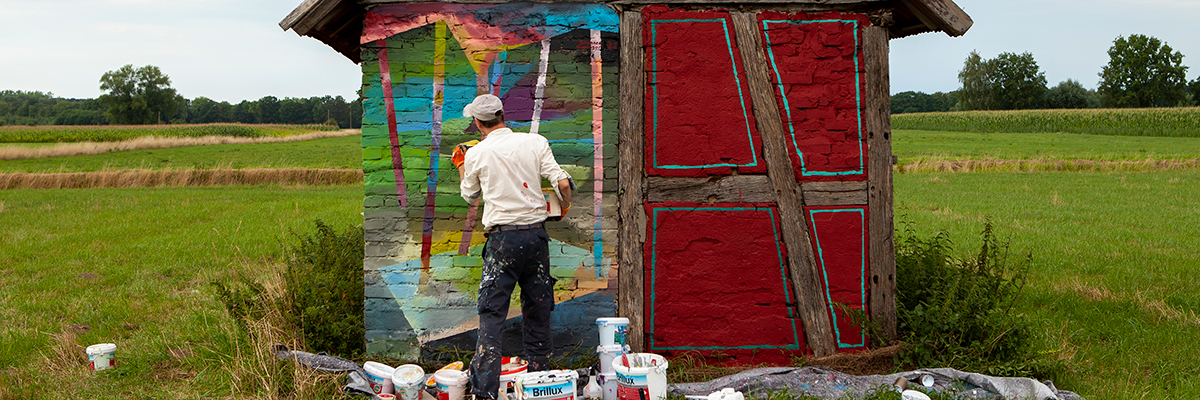It is not rare anymore, but certainly it is still unusual for street artists to take their talents in search of a barn in the countryside. Berlin’s Johannes Mundinger departed the big city this summer to do exactly that, calling his project “Feldforschung” (Field Research). It is a witty title for an unconventional artist who routinely splits reality into juxtaposing painted screens – sometimes patterns, closeups, textures, cut-outs and samples of nature all sitting in their frames next to or over top of one another.
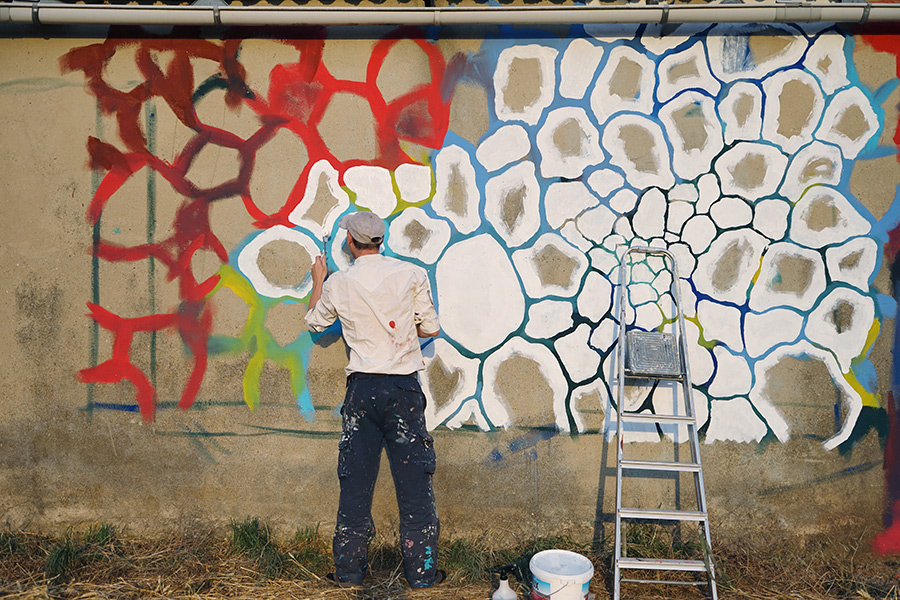
“In the motifs, I am inspired by the stories of nearby residents or the owners of properties,” he says. Like the most successful street art in an urban environment, context matters. “I take cues from what I learn about the building, its use, and the environment it is in.” But these are abstractions, so one does not worry if the original inspiration was a cow or a stalk of grain- you are permitted to interpret.
“I don’t want to paint beautiful half-timbered houses or wooden sheds. I like these simply plastered concrete blocks – windowless, in the middle of nowhere,” he says.
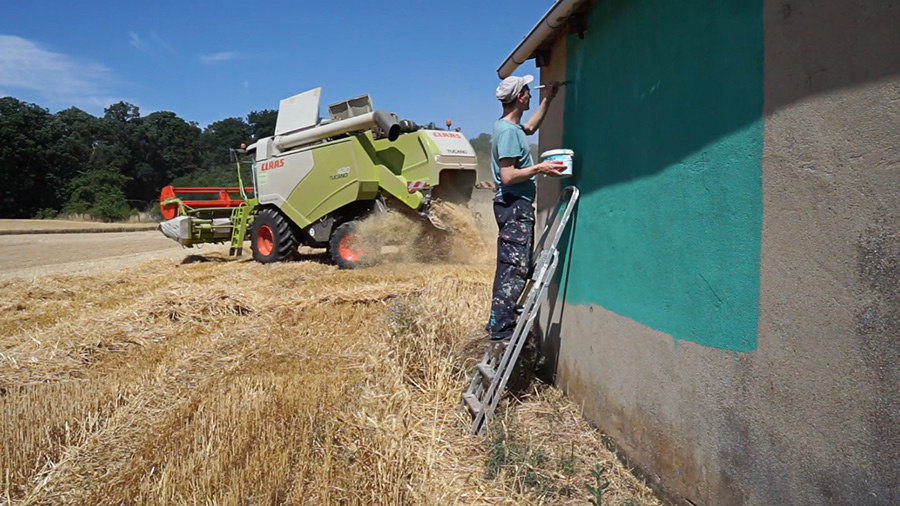
Another departure for a street artists – getting permission is recommended in rural areas, if for no other reason than it is rather hard to run away and hide in a doorway or create a clever escape through the streets. Here Mr. Mundinger had to approach farmers directly to ask permission to paint their building, and not everyone was very excited to see him there and rejected his offer, even though he brought photos of his previous works.
“While it was still somewhat easy to find the venues it was harder to find the owners, he says. “I needed to ask neighbors, land registry offices, even the mayor. The hardest part though is to convince the owners to be open for this experiment, having their property painted. Most aren´t, but some were cool and open..” Eventually he had success, and he worked steadily to avoid getting distracted by the sound and movement of natural life going on around him.
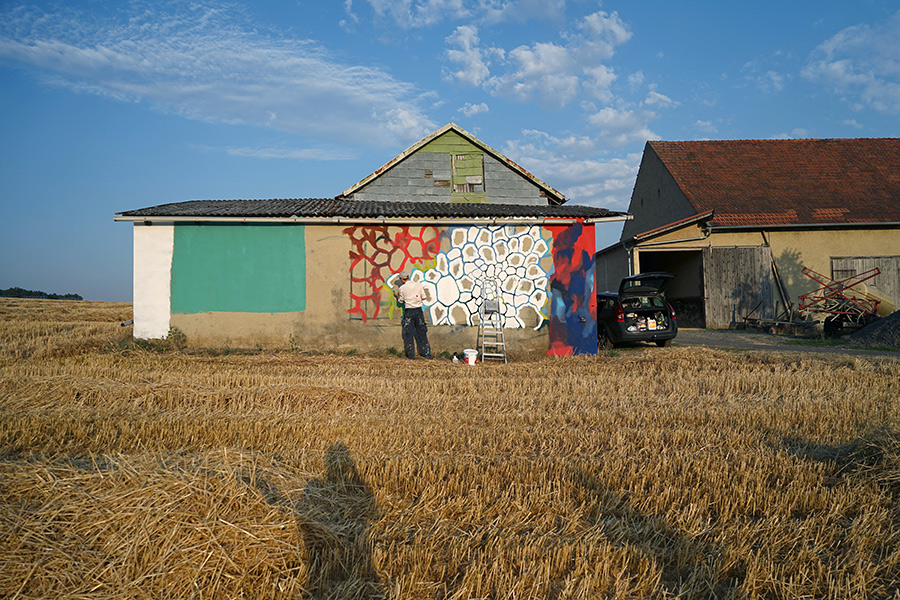
Gazing upon these new summer works in situ, they may seem incongruent, or they may look like they were naturally meant to be there. Transforming buildings that had such different purposes also contributed to the experience. For Johannes it has been an opportunity to consider his practice in an entirely new frame, so to speak.
“I like showing my work in environments far from established exhibition venues or big cities,” he says. “I’m hoping to bring some unexpected perspectives to viewers.”
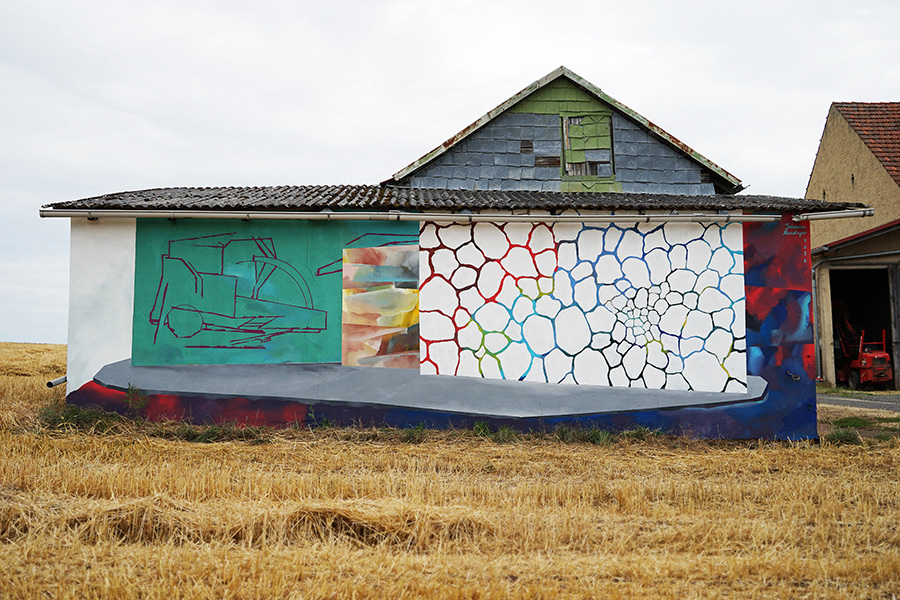
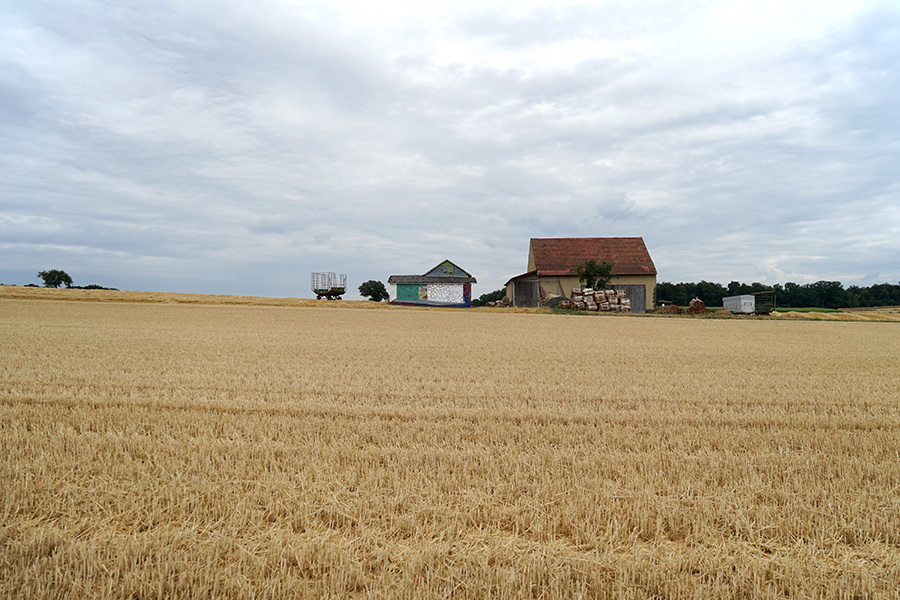
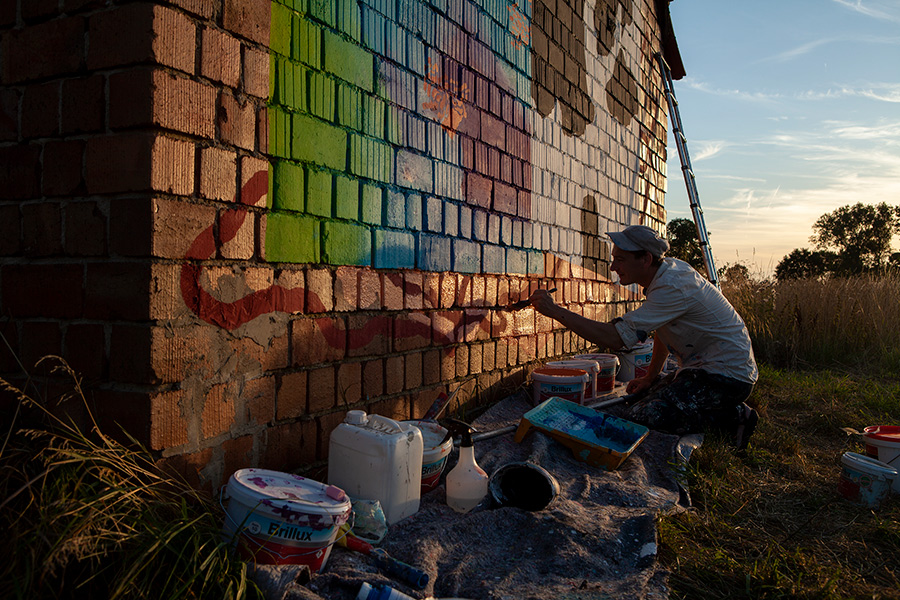
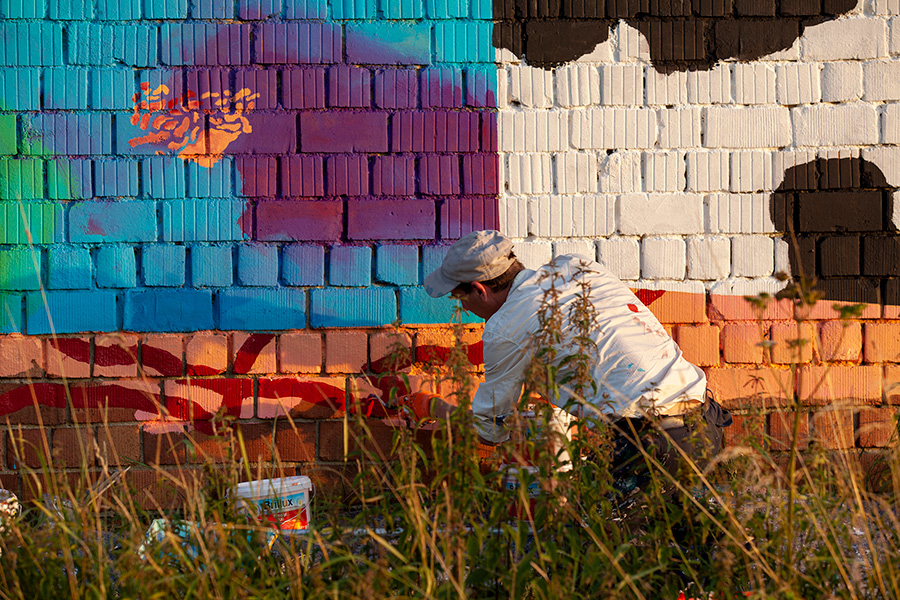
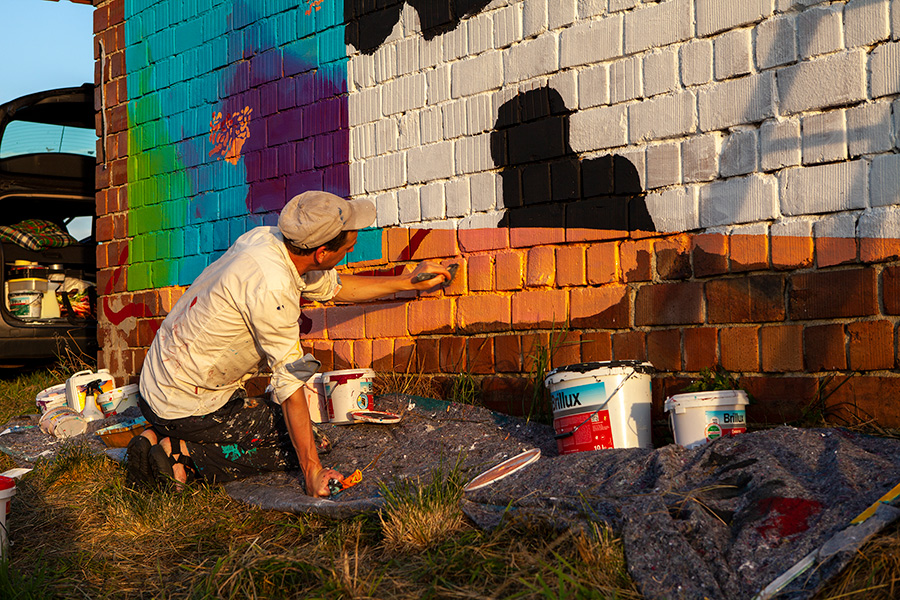
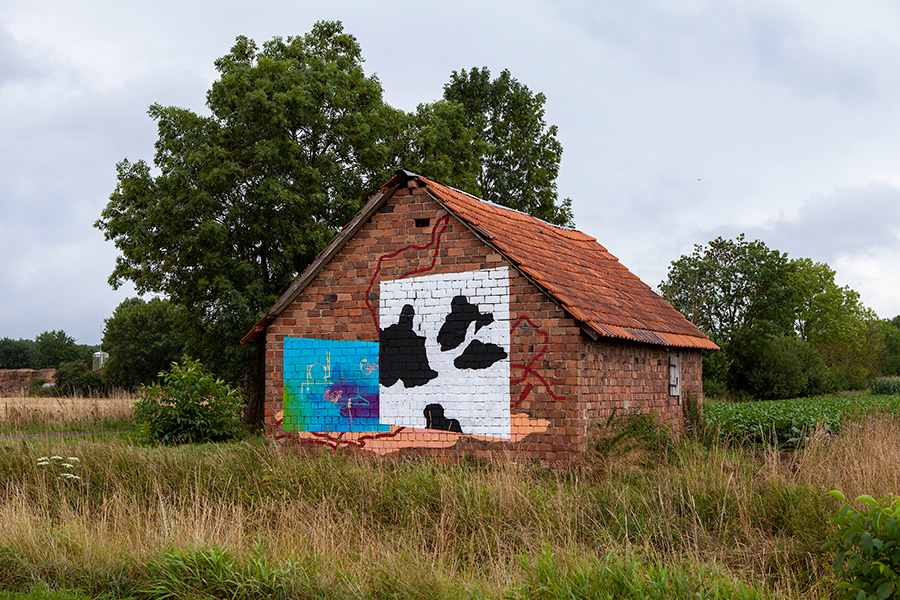
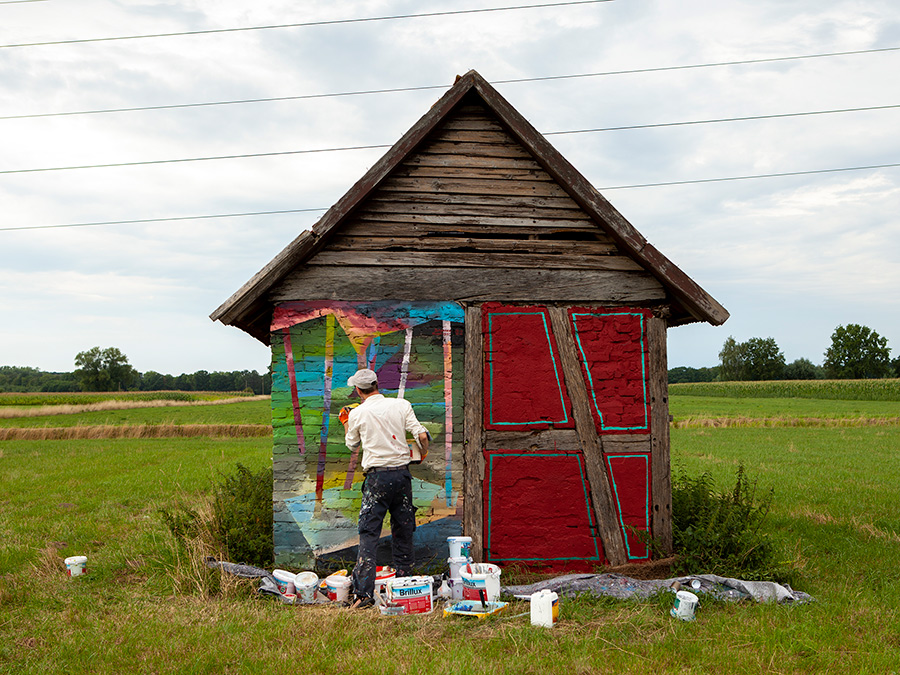
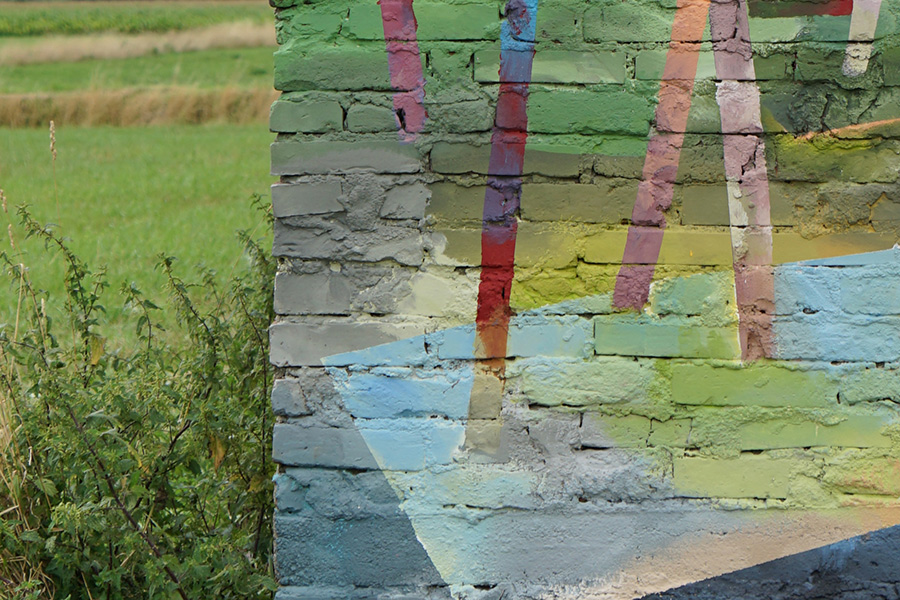
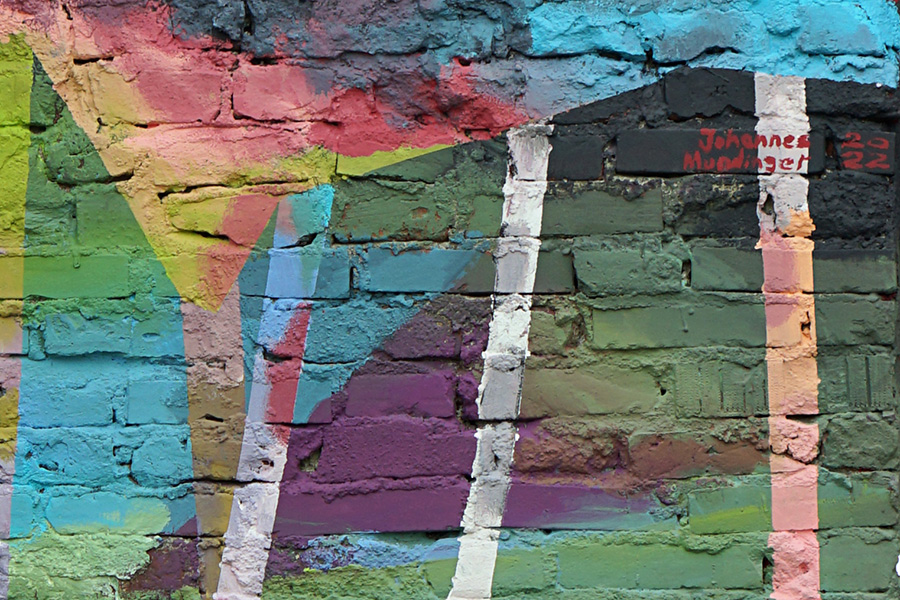

“The two walls in NRW (North Rhine Westfalia) were organized by Eva Rahe, who also took some of these photos. The buildings had been built as cow shelter and milking parlor. Most small farmers now don´t have cows in the fields anymore and a lot of the barns were abandoned and in danger of being destroyed. One such barn was saved through the intervention of a local hunter; he discovered that it was home to a little owl and asked the owner to not to take it down. So it became shelter to lots of little animals and insects.”
“Here we see that photographer Rahe discovered two lovely visitors on the roof.”
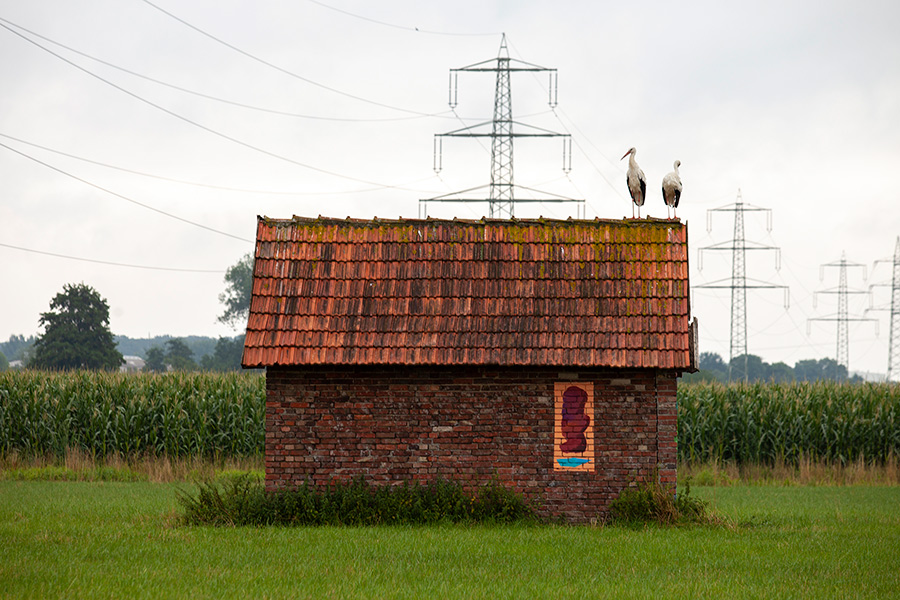
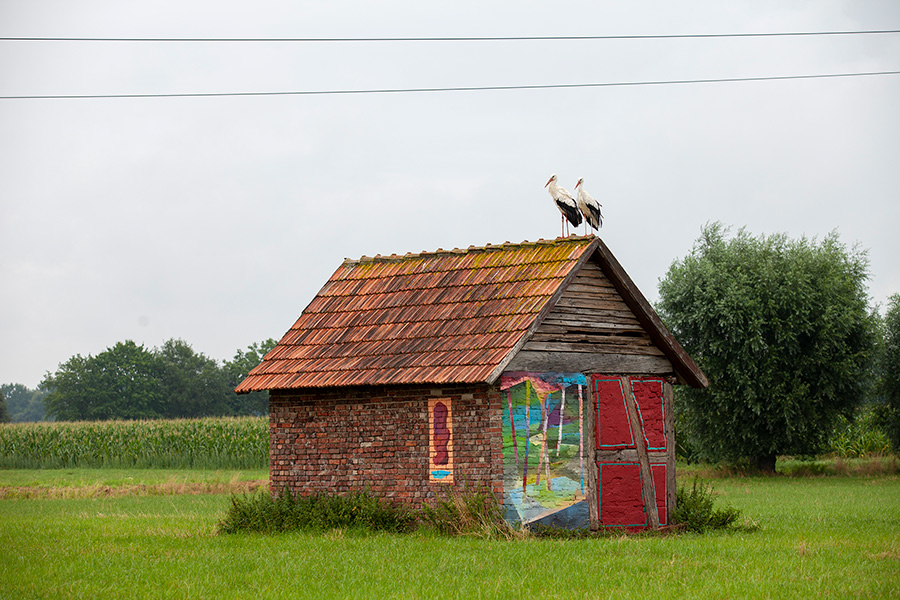

“Feldforschung” is made possible through a grant by Stiftung Kunstfonds/Neustart Kultur. Material support by Yes And… Productions.
Stiftung Kunstfonds www.kunstfonds.de
Yes And… Productions @yesandpro
Eva Rahe @eva_rahe
Culturim @culterimgallery
Johannes Mundinger @johannesmundinger / www.jmundinger.de
Other Articles You May Like from BSA:
Our weekly focus on the moving image and art in the streets. And other oddities. Now screening : 1. Calligrafreaks Project - A New Era of Writing2. Who Is My Brother? 3. Graffiti Hunting In NYC -...
It’s September 1979, the creaking fissures of societal liberalism were being formed by a retrenchment of money into public coffers, attacks on labor, and to fund western war machines – privatization ...
Our weekly focus on the moving image and art in the streets. And other oddities. Now screening:1. 1UP - ONE WEEK WITH 1UP - THE SHORT FILM 2. 5 MINUTES WITH: MADC in the Maldives 3. Lib...
A new optic vibration under the Manhattan Bridge in Brooklyn's DUMBO neighborhood by Street Artist Gilf! has been installed for passersby to decode and in a recent conversation with the artist she fra...
"After photographing in the mosh pits for awhile I began to get familiar with patterns in the music. Eventually it got to the point where I could sense the moment coming when things would really cut l...
 BROOKLYN STREET ART LOVES YOU MORE EVERY DAY
BROOKLYN STREET ART LOVES YOU MORE EVERY DAY